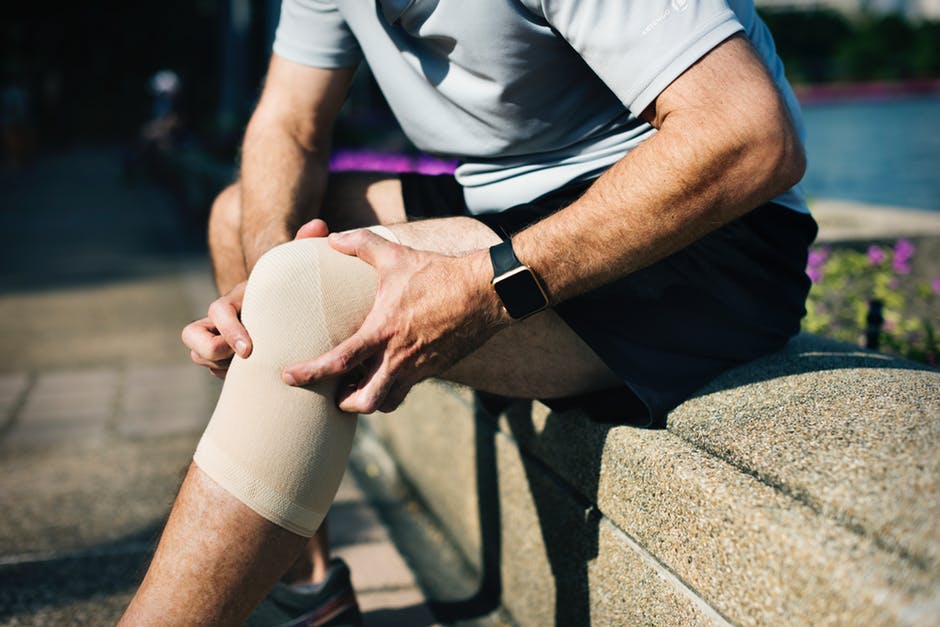As amazingly complex the human body is, sometimes things can go terribly wrong.
The knee, in particular, is a highly complex, weight-bearing joint which unfortunately means it’s highly prone to injury.
The bones, tendons, and ligaments that make up the knee can become strained, sprained, torn, or inflamed. This can cause anything from annoying clicking and cracking, to debilitating pain that leaves you unable to walk.
When you’ve got a pain in your knee, it’s best to treat the problem ASAP to prevent further damage. No matter your type of injury, you should always start by finding a licensed physical therapist to work on your recovery or pain management program together.
That said, here are 7 of the most common knee injuries and how best to treat them.
1. Anterior cruciate ligament (ACL) Injuries
A torn ACL is a common complaint of elite athletes, but anyone can tear or sprain their ACL. This painful injury is caused by a tear in the ligament that runs diagonally down the front of the knee.
Treating your torn ACL depends on the severity (grade) of your injury, but commonly requires rest and light stretching/strengthening. More severe injuries may require surgery.
2. Torn Meniscus Knee Injuries
Your meniscus is a thin piece of cartilage on either side of where your tibia bone meeds your shin bone, inside your knee joint just under your patella (knee cap). It provides cushioning for the smooth movement of your knee.
A torn meniscus is commonly due to a twist of the knee during contact sports. Treatment for a torn meniscus starts off with rest, ice, and OTC medications such as ibuprofen. Physical therapy is often needed to regain strength after a bad tear. Sometimes, surgery is also needed.
3. Dislocation of the Knee Joint
Dislocating your knee will be incredibly painful and always requires emergency treatment. This happens when the joint comes apart forcefully, usually during a major trauma like a car accident.
Ongoing treatment from a dislocation will almost always require physical therapy to regain the full range of motion and stability in your knee.
4. Tendonitis and tendon tears
Tendon injuries in the knee can be frustrating to properly diagnose and treat. Symptoms are typically sharp pain, decreased range of motion, knee stiffness, a clicking or popping sound, and warmth or swelling at the sight of the injury.
Treatment for tendonitis and tendon strains include resting and ice with gentle stretches. Tendon tears usually require more involved treatment, sometimes surgery
5. Knee Fractures
Fractures in the knee in younger people can be caused by contact sports, accidents, or falls. In older people, it can be due to arthritis or osteoporosis.
Knee fractures are treated by immobilizing the knee joint as much as possible until the bone heals itself, with the use of knee bracing and sometimes crutches or a wheelchair.
6. Knee Bursitis
Bursitis of the knee is a painful condition that causes irritation and stiffness in the back of the knee joint. Bursitis is caused by swelling in the bursae, the small sacs of fluid that cushion the outside of your knee joint.
Treatment for bursitis typically includes anti-inflammatory medications, steroid injections, and physical therapy.
7. Iliotibial Band Syndrome
The Iliotibial band, commonly known as the IT Band, is a ligament that runs from your thigh to just under the knee joint on the outside of the knee. IT band syndrome causes pain and swelling on the side or back of the knee joint, as well as stiffness that runs up the thigh.
IT band syndrome causes instability, so treatment consists of reducing intensive use of the knee while stretching and increasing flexibility. Anti-inflammatories can be taken as needed to reduce swelling and ice should be applied in the first 48 hours of injury.
Final Thoughts
Don’t ignore a nagging knee pain — it could be an injury that needs attention before it gets worse.
If you’re experiencing pain associated with knee injuries that need professional help, contact us to set up an appointment to speak with a physical therapist.

